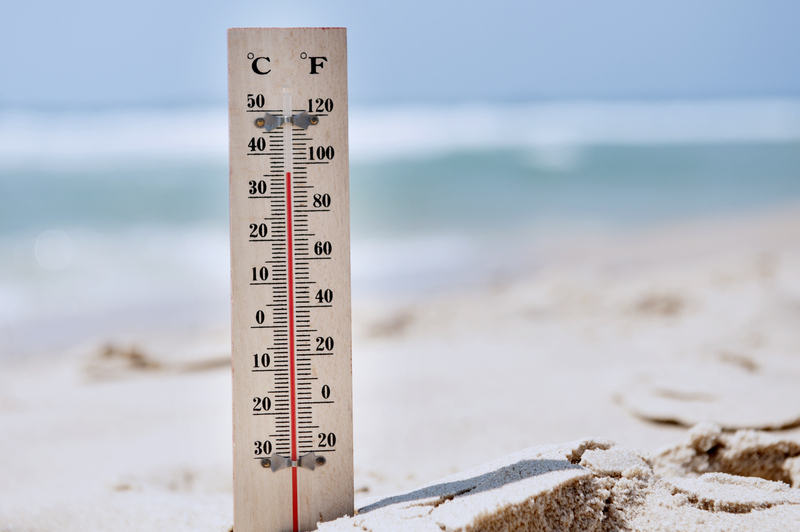The Complex Art of Moving a Piano and Reasons to Hire Professionals
Posted on 22/05/2025
The Complex Art of Moving a Piano and Reasons to Hire Professionals
Introduction to the Intricate Process of Moving a Piano
Moving a piano may seem straightforward at first glance, but it is actually a remarkably complex task that requires precise skill, specialized tools, and in-depth knowledge of both the instrument and the relocation process. Whether you have a compact upright or a majestic grand, the substantial weight, delicate construction, and financial value of pianos make them one of the most challenging items to transport. For many, hiring professional piano movers is not just a convenience--it's a necessity.

Understanding the Complexity of Piano Moving
Why Are Pianos So Difficult to Move?
Pianos are not only heavy; they are awkwardly shaped, have many fragile components, and often hold immense sentimental or monetary value. Here are some factors that contribute to the complexity of moving a piano:
- Weight Disparity: Pianos usually weigh anywhere from 300 to 1,200 pounds, with grand pianos on the upper end of the scale.
- Structural Fragility: Inside each piano are thousands of moving parts, felt hammers, and a soundboard that can crack under undue pressure.
- Size and Shape: Uprights are bulky, while grands have awkward curved sides and protruding legs.
- Finish Sensitivity: Polished wood is susceptible to scratches and dings.
- Balance and Weight Distribution: Much of a piano's weight, especially in uprights, is top-heavy and unevenly distributed.
Accidents and Damages: Real Risks of DIY Piano Moves
Attempting to move a piano without professional help often results in costly mistakes. Common risks include:
- Back injuries and strained muscles
- Cracked or splintered soundboards
- Broken legs and pedals
- Chipped veneers or scratched finishes
- Damage to walls, doorways, and stairs
Pianos are particularly susceptible to internal damage. A small jolt can knock the instrument out of tune, break a string, or even cause a major structural crack that may cost thousands to repair.
Piano Moving: Insights into the Process and Techniques
Assessment and Planning
Before a piano move begins, effective planning is essential. Professionals will assess:
- The type and size of the piano (upright, baby grand, concert grand, etc.)
- Access points--door size, staircases, obstacles
- Distance between origin and destination
- Environmental considerations, such as weather and humidity
This assessment helps determine the best moving strategy and required equipment.
Use of Specialized Equipment
Due to their weight and delicacy, moving pianos requires unique tools, such as:
- Heavy-duty piano dollies designed to distribute weight safely
- High-quality lifting straps and padded blankets
- Piano boards for grand pianos
- Custom ramps and skid boards for stairs and uneven surfaces
- Protective corner guards and shrink wrap for surface protection
Disassembly and Wrapping
Most grand and baby grand pianos require some level of disassembly before moving. Professional piano movers will:
- Remove and securely wrap the legs, pedals, and music stands
- Encase the body in heavy moving pads and shrink wrap for protection
- Label and carefully pack all components for straightforward reassembly
Safe Transportation Methods
Loaded properly, the piano must be secured in a climate-controlled moving vehicle to prevent exposure to temperature and humidity fluctuations. Movers use anchors and tie-downs to prevent shifting during transit--an essential step to avoid internal and external damage.
Reassembly and Placement
Professional piano movers don't just deliver the instrument. Upon arrival, they:
- Reassemble the piano, ensuring each part is reattached correctly
- Position the piano in its new home, accounting for acoustics, temperature, and accessibility
- Recommend post-move tuning and care tips
The Vital Reasons to Hire Professional Piano Movers
1. Protecting Your Investment
Pianos represent significant financial investment, with some models valued in the tens of thousands. Even lower-end models are expensive to repair or replace if damaged. Professional piano movers carry specialized insurance and guarantee a level of expertise far beyond that of general moving companies, giving you peace of mind your investment is safe.
2. Safety of People and Property
Lifting a piano is inherently dangerous. The risk of injury to yourself or helpers is high without training and equipment. Professionals minimize this risk by using safety techniques and are covered should any injuries occur on the job.
3. Proper Tools and Transportation
Not all moving companies have the correct dollies, padding, tie-downs, and ramps tailored for a piano. Without these, doors, floors, and staircases are also at risk. Piano movers arrive with industry-standard tools and vehicles designed to accommodate heavy, delicate cargo.
4. Experience and Training
Piano moving experts are not only trained; many companies have years--even decades--of experience moving a wide range of piano makes and models. They are prepared to handle unexpected challenges, ensuring every move is smooth and damage-free.
5. Insurance and Liability Coverage
Unlike moving a sofa or mattress, relocating a piano requires specific insurance. Reputable piano movers carry comprehensive coverage to protect you in the event of damage or accident--something rarely included in general moving contracts.
DIY Piano Moving: Why It's Rarely Worth the Risk
Many people consider saving money by attempting to move their piano. However, the risks often outweigh the financial benefit. Here's why:
- Potential for Irreversible Damage: A slip or knock can destroy a piano's frame or soundboard, resulting in costly repairs or permanent damage.
- Injury Risk: The weight and cumbersome nature make pianos a leading cause of moving-day accidents.
- Lack of Proper Equipment: Most homeowners don't own the necessary moving tools or a suitable vehicle for safe transport.
- Possible Voided Warranties: Many manufacturers' warranties are voided if you move the piano without certified professionals.
For any valuable instrument, it's best to leave relocation to those who understand the art and science of piano moving.
How to Choose the Right Piano Moving Professionals
Research and Reviews
Look for piano movers with extensive experience and positive customer reviews. Search online directories, local business bureaus, and music stores for reputable recommendations. Don't be afraid to ask for references or case studies.
Certification and Insurance
Always verify that the moving company:
- Has required licensure and certifications
- Offers insurance tailored for musical instruments
- Employs trained piano moving specialists
Transparent Estimates and Communication
Obtain a clear, written estimate that covers all potential charges. Be wary of rates that seem suspiciously low, as these may indicate a lack of experience or training. A reputable mover will ask for information about your specific piano and move requirements.
Caring for Your Piano After the Move
Post-Move Acclimation
After relocation, allow the piano to acclimate to its new environment for a few weeks before tuning. This gives the wood and internal components time to adjust to temperature and humidity changes, minimizing future tuning instability.
Professional Tuning and Inspection
- Schedule a professional tuning 2-4 weeks after the move
- Have a technician check for any minor damage or shifting of internal parts
- Consider an annual inspection to preserve long-term condition and value

Frequently Asked Questions About Moving Pianos
- Can any moving company relocate a piano?
Not all moving companies are trained or equipped to move pianos. Always seek out specialists with adequate experience. - How much does professional piano moving cost?
Costs vary depending on the piano type, move distance, and accessibility, with typical prices ranging from $150 to $1,000 or more. - How long does the process take?
Most local moves are completed in a few hours; complex disassembly/reassembly or long-distance moves require more time. - Is tuning required after moving a piano?
Yes, as the move and atmospheric changes may impact tuning. Wait a few weeks before scheduling the service.
Conclusion: Why Trusting Professionals is Best
The art of moving a piano is far more intricate than it appears. Given the instrument's size, value, and delicate nature, the smart choice is always to hire professionals with proven expertise, specialized equipment, and adequate insurance. Whether you are protecting a cherished heirloom or a concert performer's grand, entrusting the move to certified piano movers ensures your instrument arrives at its new home in pristine condition.
If you are planning to move a piano, invest in experienced professionals. The cost of hiring a specialist is minimal compared to the risks and potential damages of a DIY move. Let the experts handle the heavy lifting--your piano, your home, and your peace of mind will thank you for it.



 Guide price for the hire of a Transit Van /up to 300 cu ft/.
Guide price for the hire of a Transit Van /up to 300 cu ft/.